Minimum viable product (MVP)
Before we dive into the MVP product development, let’s define MVP first.
A minimum viable product (MVP) is an early product version with limited features, which is targeted at collecting customer feedback for further product development. This feedback is essential. For product developers, the aim is to learn:
- what needs customers have
- how these needs can be satisfied with the product
- which functions the audience wants
- how the market reacts.
In most cases, an MVP is mentioned in connection with the lean startup concept and can also be used in this context.
MVP product development
An MVP is a finished product and should be treated as such. This means that customers should get a functional, reliable, usable, and attractive solution. That said, every advanced function should be excluded from an MVP. Only the functions that are necessary to fulfill the actual purpose of the product are included. This saves a lot of time, work, and money.
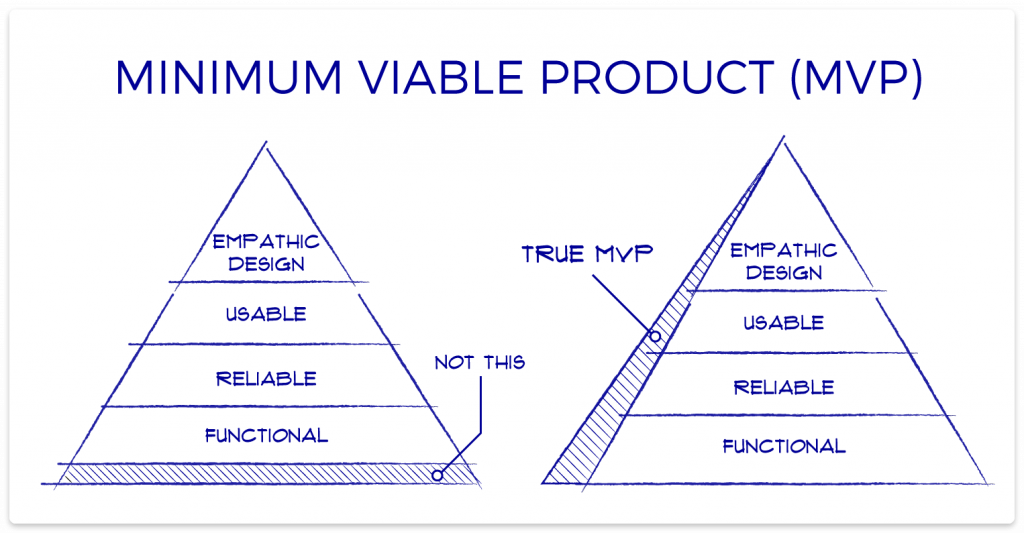
An MVP is reduced to at least one core property. As can be seen from the MVP definition, its goal is to check whether customers are interested in the product and whether they want to spend money on it. Potential customers are usually early adopters who are interested in products that are still in development and are excited to try them out very early.
Through early customer contact, product developers quickly learn which features are desired and which are not. This provides crucial information on how and in which direction the product should be further developed.
The product is continuously developed through feedback and development cycles. Customers receive the product and give feedback. Developers evaluate this feedback and further improve the product. Customers provide feedback again, and the cycle repeats itself.
The minimum product can be compared to a prototype, as both are in the development cycle. But in addition, the definition of MVP is reduced to a few core functions, while a prototype is still an unreleased product.
Why a minimum viable product is necessary
It has to be quick and easy. The basic idea of an MVP product development is to create a product as quickly as possible with only the most necessary functions – e.g., a landing page. It is then published immediately, and feedback from potential customers is obtained at once. This feedback is then used to expand and improve an MVP.
The main reason for developing an MVP is to minimize risk. If you choose to bypass MVP development and instead create and release the full product, you run the risk of miscalculating market demand, product attractiveness, desired functionality, as well as losing time and money. Developing an MVP first protects you from all of this, with no advanced development, marketing, and sales costs accrued.
For most MVPs, no extensive programming knowledge or the like is usually required. Most problems can be solved by skillfully using existing techniques. For example, there are enough website builders that can be used to create rudimentary websites without requiring web developers and analysts to test your concept.
The summarized advantages of the MVP are the following:
- Low capital investment (costs are reduced, and resources are saved)
- Low risk of loss
- Customer feedback is obtained very early in the development cycle
- Product developers receive ongoing feedback
- Proof that a product is well or badly received
- Evidence of demand
Minimum viable product types
There are several types of MVPs, depending on the purpose and form.
Type 1. Pre-order MVP: Use better financing options
This type is primarily about testing or financing the planned project. The project is presented on a website or a landing page and, in the form of crowdfunding, customers have the opportunity to signal interest or contribute financially.
Once a certain volume has been reached, the startup can begin with the detailed design or even manufacturing of the product described. Of course, this type of financing can also be made more specific by allowing customers to pre-order the product directly – even without a finished product.

In this way, only as much is produced as can actually be sold. The great advantage of this approach is not only evident in the improvement of liquidity. As a founder, you can quickly see how or whether a product reaches the target group at all. Kickstarter is a great platform for this type of MVPs.
Type 2. Audience Building MVP: Actively build the target group and learn from them
This type is less about the financial aspect. The focus is instead on the interaction with potential customers. It has to be about approaching the potential target group through various channels (preferably face-to-face during customer interviews) and presenting the advantages of a not yet existing MVP.
In addition to customer interviews, this MVP type is also a tried and tested method in niche-relevant Facebook groups and on Reddit. Social media is ideal in general – an audience-building MVP can use any platform that comes into direct contact with the targeted group: just post your project and try to get feedback from your potential clients.
The collected feedback will help you adapt your MVP directly to customer requirements in an early phase. If, after a while, it turns out that there is a growing fan base, the next step should follow: an MVP is released onto the market. It is in the nature of things that this approach works best for typical online products or services.
Type 3. Landing Page MVP: In the beginning, there was only a website
The easiest way of testing is via a landing page on which interested parties can buy a product. The only purpose of this website is to advertise the product. Here’s how it works: advertising campaigns on Facebook or Google Adwords direct visitors to the website. Afterward, operators can evaluate how many people have seen the product (site visitors) and how many have bought it.
From there on, collected feedback will show at a very early stage what the chances of success are for this product. In any case, this approach corresponds to the entrepreneurial spirit of quickly entering the market.
If you want to use the lean startup method consistently, you have to incorporate interaction options so that as many customers as possible can leave their valuable feedback for product development. This can be done via a contact form, an email signup form, or a live chat.
Type 4. MVP as an explanatory video
An MVP must be one thing above all: practical and easy to understand. And what is more obvious in terms of a quick market launch than to present a product/service through a professionally created explanatory video? Here are some MVP video examples:
Videos let you explain basic functional principles and customer benefits quickly and convincingly, as well as sum up the perceived added value of a business idea or a product in a compact and sometimes funny way. The better you perform with such a video, the sooner you will be able to engage potential customers.
Type 5. Flintstone / “Wizard of Oz” MVP: The illusion of a new business model
This kind of an MVP is about creating an illusion of a fully functional product. At first glance, the Flintstones’ car looks modern. But when the camera lowers, the drive is exposed as highly rudimentary. The same is happening with this MVP.
It looks like the process is fully automated. But in reality, all the manpower available is working behind the scenes to provide customers with a functional solution, manually. This approach has the advantage of being very inexpensive to develop while providing immediate customer feedback.
If you choose this approach, you can test the market reaction for your product with little financial means. If there is a positive response or a certain direction for the development, it can be tracked based on the market.
Type 6. MVP with only one function: Achieve a lot with little resources
This form of an MVP can be seen as an ultimate choice – it’s about bringing functionality to the customer as simply and convincingly as possible.
Such a product (or service) must reliably perform a central function and be actually useful. This creates the basis for scalability. Over time, there are more opportunities to learn from customers and gradually adopt a range of new functions.
Minimum viable product examples
Many companies use multiple different MVPs before developing and launching the actual product. And in many cases, the businesses skyrocket with the help of an insanely simple MVP. Some of the best simple MVP examples are explained here:
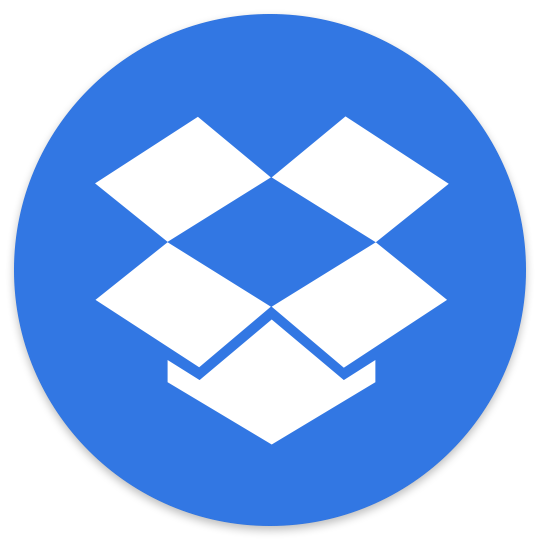
Dropbox: With an explanatory video as an MVP to 75,000 beta users
The world-famous cloud storage giant Dropbox is a successful prime example of the explanatory video MVP (type 4). In the beginning, the (now extremely profitable) company consisted only of an explanatory video that conveyed the basic benefits of the product idea in an original way:
In terms of psychological perception, an explanatory video makes sense anyway: pictures say more than 1,000 words, and they stay in your head longer. The video about Dropbox must have been compelling because beta-user registrations rose from just under 5,000 to 75,000 overnight, even though the actual software solution did not exist yet!
The founders knew instantly – they’re onto something. Only after this success, they implemented a corresponding software solution, which is gaining more and more functionality to this day.
Ultimately, with an MVP, this is the key to the desired scalability: at some point, the functionality must be so good that customers willingly pay for it. Dropbox showed how this could work.
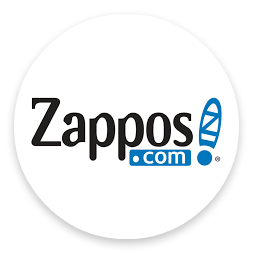
Zappos: An online shop that doesn’t actually exist (yet)
Today’s e-commerce champion Zappos (with annual sales counted in billions) started very small, with a Wizard of Oz MVP (type 5). Zappos did not start as a finished online shop with functioning logistics, but only as a ‘dummy’ to test hypotheses and research customer behavior. In the beginning, they were looking to answer one simple question – whether shoes could be bought online.
It was 1999, and the idea was new, risky, and brave, even though now we can clearly see its impact. So what they did was taking photos of shoes, uploading them to a website, and offering them for sale. For customers, the whole thing appeared to be a finished business model, even though in reality, in the very early phase, each shoe was bought from the local dealer after an order was placed and then simply sent by post.
It quickly became clear that the ‘sell shoes online’ business model was very promising. Today’s figures and revenue show how significant an outcome from an initially small product test can be.

Buffer: What can become out of a landing page
The supposedly easiest way to bring an MVP to the market is by means of a landing page (type 3). As a successful practical minimum viable product example, you should take a closer look at Buffer. It’s an app to plan and control activities on social networks.
In the beginning, Buffer consisted of a very simple landing page that explained the product’s advantages. Interested parties were also encouraged to register directly. Email addresses obtained this way were used to interact with potential customers and to further develop the product using feedback. The next step was to test how willing customers were to pay for the service (depending on the possible functions).
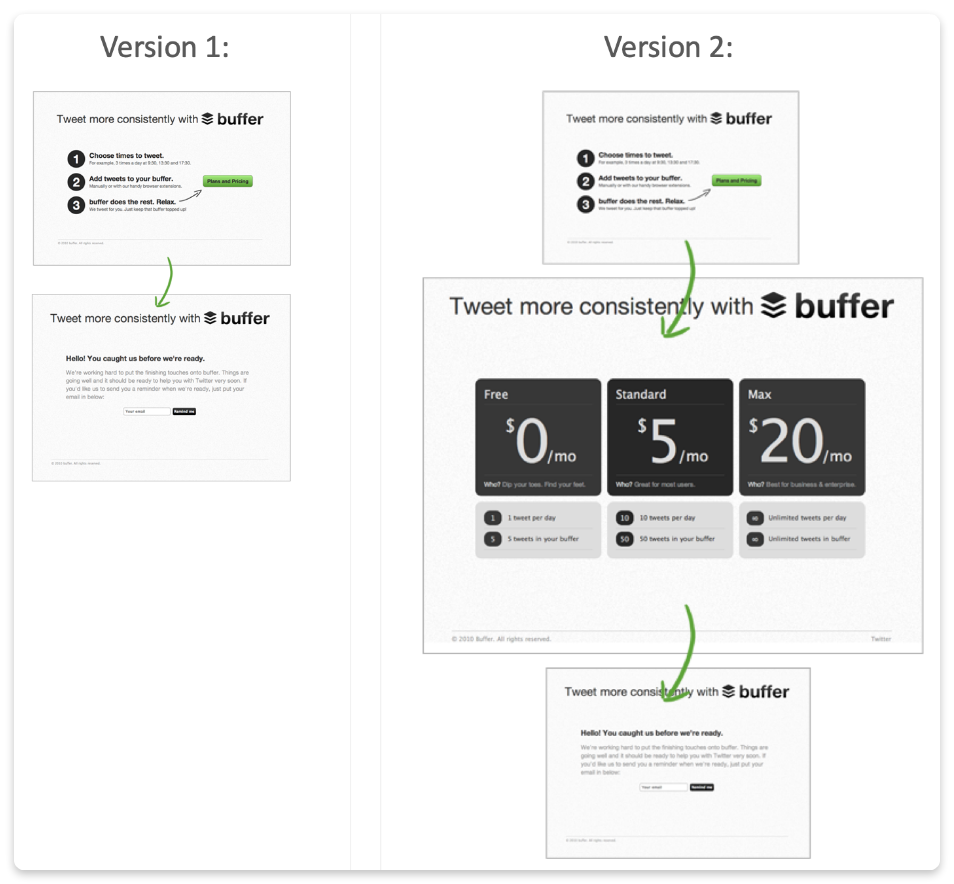
Buffer MVP landing page initial and second versions
Buffer is a successful and, at the same time, very vivid practical example of an MVP. It shows step by step how customer feedback can be efficiently integrated into planned learning processes. Fundamentally, this way offers a very low-cost and low-risk opportunity to test a product idea on the market for its chances of success.
Other minimum viable product examples

Spotify
Before Spotify became an international music streaming service, its founder Daniel Ek tested his idea in Sweden. In an early version of Spotify, only Swedish artists were targeted as part of the service and only on the Swedish market. It functioned so well that the development and internationalization quickly followed.
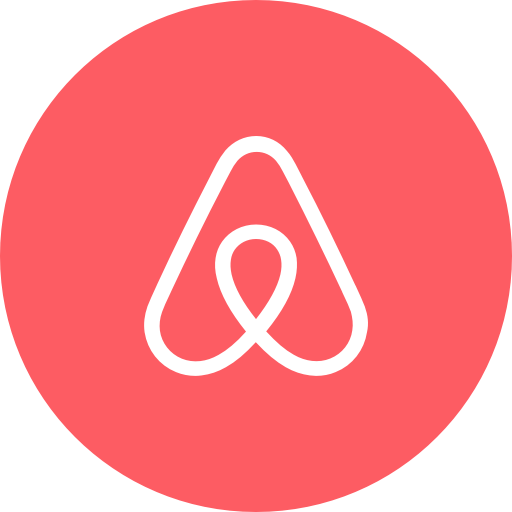
Airbnb
Before the founders of Airbnb became known worldwide with their app, they tested the rental of rooms in their apartment. To do this, they set up a website, collected feedback, and learned what form Airbnb should take.
Additional practical applications and solutions
Video games as beta
Some video game developers allow interested players to play their game when it is not yet fully developed. This early contact allows them to give feedback early and influence the development of the game. The game developer receives support and feedback from beta-testers at an early stage and can test how and whether the game arrives.
Minimum viable team
A “minimum viable team” is the idea of a team consisting only of essential and important people who have clear roles and are experts in their field. They all work together on one goal, and their personalities and temperaments are coordinated or balanced.















